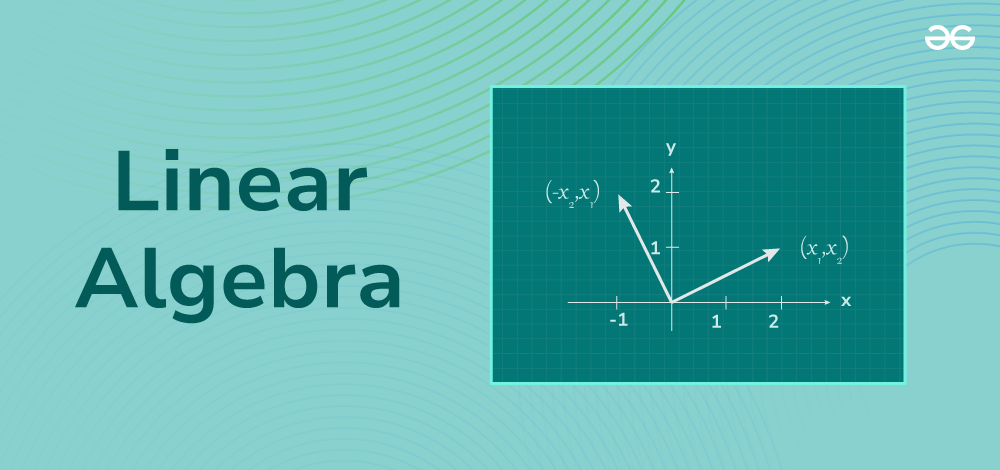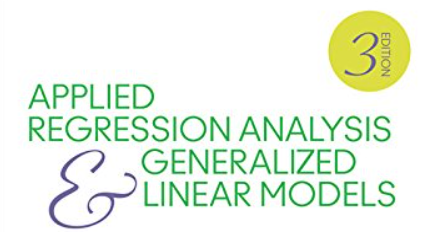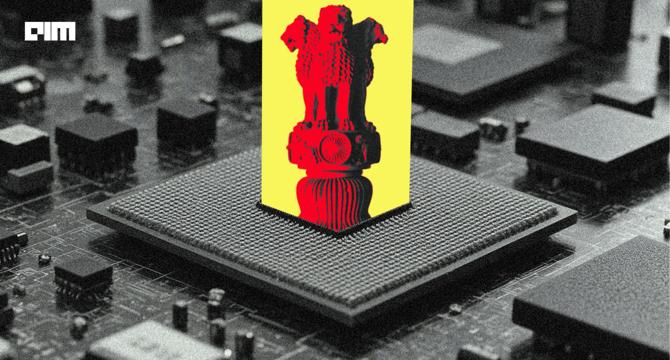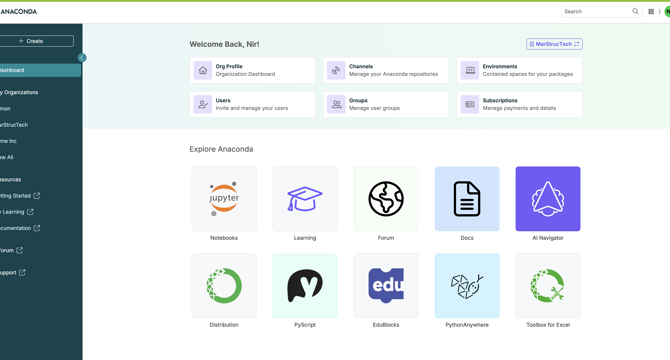Data Science News
Medium
9

The Math Behind the Magic: Why Data Science Needs More Than Code
- Data science relies heavily on mathematics to power insights and predictions, going beyond just coding and tools like Python and Tableau.
- Statistics helps in making sense of real-world data, while linear algebra is essential for machine learning techniques like training models.
- Calculus plays a key role in optimizing models for efficiency, and probability theory is crucial for making informed predictions in areas like spam detection.
- Understanding the math behind data science tools builds intuition, allowing data scientists to trust, tune, and troubleshoot models effectively.
Read Full Article
Like
Medium
392

Image Credit: Medium
Linear Algebra in Machine Learning: Smoothie Analogy for Learning Math
- Linear algebra, often perceived as complex, is fundamental to machine learning and can be understood through a fun analogy like making smoothies.
- Linear algebra serves as the backbone of many machine learning algorithms, helping in calculations for input-output relationships.
- Using the example of a smoothie shop with different recipes, the concept of matrices and vectors is explained in relation to linear algebra.
- By visualizing linear algebra concepts through everyday analogies, such as smoothie-making, one can develop a better understanding of its applications in machine learning.
Read Full Article
23 Likes
Towards Data Science
63

Get Started with Rust: Installation and Your First CLI Tool – A Beginner’s Guide
- Rust is a popular programming language known for its security and high performance, combining features of C, C++, and simplicity of modern languages like Python.
- Installation of Rust is made easy through the official installer rustup, available for free on the Rust website.
- For Windows installation, downloading rustup-init.exe and running it through command line completes the process.
- On Linux, Rust can be installed through the terminal using a specific command.
- For macOS, installation via Homebrew or a script is possible.
- Using cargo, the official package manager and build system of Rust, a new project can be initiated with ease.
- Cargo assists in project management by handling dependencies, compilation, tests, and builds.
- Dependencies like serde and serde_json facilitate working with data formats like JSON.
- By following set-up steps and writing Rust code, a simple CLI tool to parse and display JSON content can be created.
- The process includes creating a project, defining dependencies, writing code for JSON parsing, and testing the CLI tool.
Read Full Article
3 Likes
Towards Data Science
376

Non-Parametric Density Estimation: Theory and Applications
- Density estimation is essential in statistical analysis for inferring the probability density function of a random variable given a sample data. It can be used for distribution analysis, classification tasks, and more.
- Histograms and Kernel Density Estimators (KDEs) are popular non-parametric methods for density estimation, with KDEs being a smoother alternative to histograms.
- Density estimation methods may be parametric (assuming a known distribution) or non-parametric (making no rigid assumptions about the distribution). Non-parametric methods like KDEs typically have lower bias and higher variance.
- Histograms partition data into bins, while KDEs compute weighted sums of neighboring points. KDEs generalize the histogram approach and are commonly used in practice.
- Kernels play a crucial role in KDE, with choices like Gaussian, Epanechnikov, rectangular, and triangular, influencing the smoothness of the density estimate.
- The accuracy of density estimators is influenced by bias and variance trade-offs, with bandwidth selection impacting the estimation quality.
- In classification tasks, density estimation can be used to build classifiers like Naive Bayes, where parametric and non-parametric density estimates affect decision boundaries and classification accuracy.
- Non-parametric Naive Bayes classifiers may provide more flexible decision boundaries but could introduce roughness, compared to smoother decision boundaries from parametric approaches.
- Understanding density estimation theory, methods like histograms and KDEs, and their applications in classification tasks offer valuable insights for statistical analysis.
- Resources like notes on nonparametric statistics, statistical learning textbooks, and datasets like the famous Iris dataset can aid in further exploration of density estimation.
- The choice between parametric and non-parametric density estimation depends on the dataset characteristics, with parametric assumptions often offering smoother decision boundaries in classification tasks.
Read Full Article
22 Likes
Medium
214

Image Credit: Medium
Advanced Data Analysis: Elevating Your Skills with Modern Techniques
- Using advanced data analysis techniques like crPlots, influence.measures, splines, gam, glm, lmer, rlm, bootstrapping, mice, selection, and cross-validation can lead to unbiased and reliable results.
- Ignoring influential points or nonlinearity can result in biased estimates and overconfidence in results.
- Assuming linearity can obscure true effects, leading to incorrect policy or business decisions.
- Using OLS on counts or proportions violates distributional assumptions, producing nonsensical predictions.
Read Full Article
12 Likes
Towards Data Science
56

Rethinking the Environmental Costs of Training AI — Why We Should Look Beyond Hardware
- Hardware choices and training time significantly impact energy, water, and carbon footprints during AI model training, while architecture-related factors have a minimal effect.
- Energy efficiency during AI model training has improved slightly over the years, showing a 0.13% improvement annually.
- Longer training times can gradually reduce overall energy efficiency by 0.03% per hour.
- The study analyzed AI models' architectural and hardware choices' impact on resource consumption during training.
- Data from Epoch AI's Notable AI Models dataset was used for estimation and analysis methods.
- Results indicated that hardware choices and training time were significant predictors of energy consumption during AI training.
- AI models have become slightly more energy-efficient over time, with an estimated 0.13% improvement annually.
- Training time was identified as a significant factor influencing energy efficiency, decreasing by 0.03% per hour.
- The study highlighted the significant environmental impacts of AI model training and the importance of considering hardware choices and training practices.
- Further research is recommended to explore interactions between hardware types and training practices for more comprehensive insights.
Read Full Article
3 Likes
VentureBeat
405

Image Credit: VentureBeat
AI power rankings upended: OpenAI, Google rise as Anthropic falls, Poe report finds
- OpenAI and Google have strengthened their positions in key AI categories according to the latest report by Poe.
- The report highlights shifts in market share, with rapid innovation and an increasingly diverse competitive landscape.
- In core text generation, OpenAI's GPT-4o maintained dominance, while Google's Gemini 2.5 Pro gained share.
- Specialized reasoning models gained importance, with Gemini 2.5 Pro leading the category.
- OpenAI released multiple reasoning models, showing rapid innovation in the space.
- Hybrid reasoning models like Gemini 2.5 Flash Preview and Qwen 3 are emerging.
- The image generation market saw increased competition, with Google's Imagen 3 family growing substantially.
- In video generation, Kuaishou's Kling models disrupted the market, while Google's Veo 2 maintained a strong position.
- ElevenLabs led the audio generation category, facing emerging competition from players offering differentiated voice options.
- Reasoning capabilities are becoming crucial in the AI market, signaling a shift in how businesses evaluate and deploy models.
Read Full Article
24 Likes
Towards Data Science
335

TDS Authors Can Now Receive Payments Via Stripe
- TDS Author Payment Program introduced in February has now integrated with Stripe for simplifying payment process.
- Authors can now connect their Stripe account to their author profile on the Contributor Portal for timely and streamlined payments.
- Eligibility conditions and article criteria for earning on TDS remain the same.
- Payments to authors will be processed on the 15th of each month following a 30-day earning window of the article.
Read Full Article
20 Likes
Analyticsindiamag
383

Image Credit: Analyticsindiamag
NVIDIA to Deploy 18,000 Chips for AI Data Centres in Saudi Arabia
- HUMAIN, a subsidiary of Saudi Arabia's Public Investment Fund, partners with NVIDIA to deploy 18,000 GB300 Grace Blackwell chips for AI factories in the Kingdom.
- NVIDIA and HUMAIN to build hyperscale AI data centres using hundreds of thousands of NVIDIA GPUs, supporting training of sovereign AI models and digital transformation.
- The partnership includes workforce training programs for Saudi developers in AI, robotics, and digital twin technologies, aligned with Vision 2030 goals.
- NVIDIA is part of several technology companies investing in Saudi Arabia, with Oracle committing $14 billion and AMD partnering with HUMAIN for AI infrastructure development.
Read Full Article
23 Likes
VentureBeat
269

Image Credit: VentureBeat
SimilarWeb’s new AI usage report reveals 5 surprising findings, including explosive growth in coding tools
- SimilarWeb's new AI usage report provides insights into the current landscape of generative AI usage online, tracking trends across various sectors.
- Developer-focused AI tools are experiencing a significant surge in adoption, with a 75% increase in traffic. Platforms like Lovable and Cursor have shown remarkable growth.
- Two of the fastest-growing AI platforms, Grok and DeepSeek, saw a rapid rise followed by a decline, emphasizing the importance of retention over virality.
- Writing and content tools in generative AI are experiencing user fatigue, with a decline in overall category traffic. Design-focused AI platforms have shown mixed performance.
Read Full Article
16 Likes
Medium
255

Image Credit: Medium
How To Build End-To-End AI Voice Agentic App Using AI/ML API and OpenAI Realtime API
- A participant in a LocalDown hackathon built Wei, an AI agent for habit-building, and won 3rd place.
- Wei is an AI agent that makes habit-building effortless through natural dialogue and offers rewarding experiences.
- The tutorial covers building Wei from scratch using the official OpenAI Agents Python SDK and AI Agents SDK.
- Wei is powered by tools like shadcn/ui for Next.js, motion-primitives, and prompt-kit.
- Approximately 6 to 7 AI Agents handle different aspects of the app, transferring control to each other as needed.
- Agents like Greeter, General, Rewards, Points, Habits, and Info Agents manage various functionalities in Wei.
- Functions such as getting user data, managing habits, calculating points, and providing rewards are handled by specific agents.
- The API logic for Wei involves handling requests, managing database functions, and using cached user data for efficient processing.
- UI components like ChatInterface, ChatInput, and associated contexts are crucial for enabling interactions with the AI agent.
- The tutorial delves into building the app's UI/UX, running the app locally, and deploying it using Vercel.
Read Full Article
15 Likes
Analyticsindiamag
282

Image Credit: Analyticsindiamag
India Gets First 3nm Chip Design Centres in Noida and Bengaluru
- India's first chip design centres dedicated to developing 3 nanometer chips will be built in Noida and Bengaluru by Renesas Electronics, marking a significant development in India's semiconductor ecosystem.
- The 3nm chip design centre is a milestone for India in global semiconductor innovation, with previous designs at 7nm and 5nm, and Renesas Electronics establishing design centres in Noida, Bengaluru, and Hyderabad.
- Union Minister Ashwini Vaishnaw inaugurated a major semiconductor design centre in Uttar Pradesh as part of India's broader semiconductor strategy, emphasizing talent development and industry readiness through semiconductor learning kits and EDA software tools distribution to academic institutions.
- India's semiconductor industry has progressed from a nascent stage to an emerging global hub within a short span, with government support under the Aatmanirbhar Bharat programme and strategic partnerships with companies like Renesas Electronics towards sustainable growth.
Read Full Article
17 Likes
Siliconangle
410

Image Credit: Siliconangle
Anaconda releases data science platform optimized for open-source development
- Anaconda Inc. has launched a unified AI development platform optimized for open-source software usage.
- The Anaconda AI Platform offers security, governance features, and productivity aids specific to open-source development, improving operational efficiency by up to 80%.
- The platform simplifies open-source management, ensures security and integration, and provides compatibility for AI development across different platforms.
- Anaconda aims to address AI vulnerabilities and support next-generation AI use cases for Python with its new platform, which includes features like AI Assistant, unified command line interface, and package auditing capabilities.
Read Full Article
24 Likes
Analyticsindiamag
226

Image Credit: Analyticsindiamag
Google Launches AI Futures Fund to Support Next Wave of AI Startups
- Google has launched AI Futures Fund to support startups leveraging its advanced AI tools, such as Gemini, Imagen, and Veo.
- Selected startups will gain early access to Google DeepMind's AI models and collaborate with Google experts across various fields.
- Participating startups like Toonsutra, Viggle, and Rooms are utilizing AI tools for tasks like translation, meme generation, and interactive 3D content creation.
- In addition to the fund, Google has introduced a three-month accelerator program in India to help startups scale using Google's products and expertise.
Read Full Article
6 Likes
Medium
383

Image Credit: Medium
The Mirage of “Plug-and-Play” AI
- Many enterprises face challenges with AI integration due to the complex and outdated systems they operate.
- Efficient integration of AI requires a strong API infrastructure to enable seamless communication between various systems.
- Investing in generative AI can yield significant returns, but successful implementation depends on overcoming integration hurdles.
- Prioritizing API development and integration work is crucial for maximizing the potential of AI applications and improving customer experience.
Read Full Article
23 Likes
For uninterrupted reading, download the app